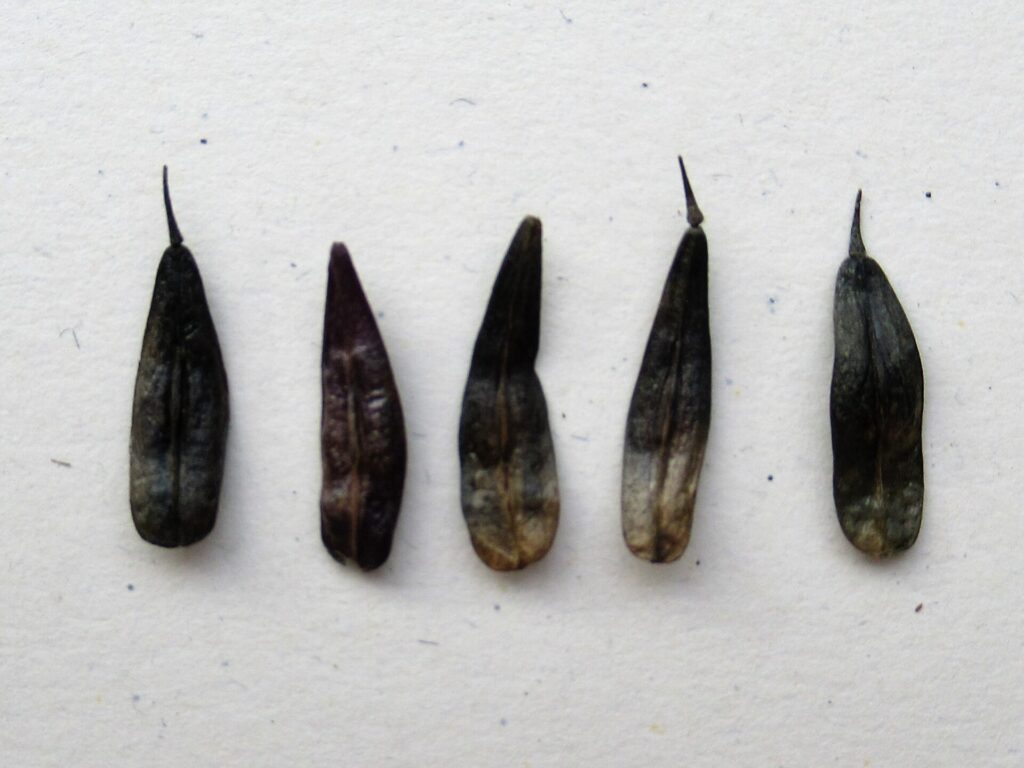
‘Urgent: Woad Growers Wanted’, a newsletter that landed in my inbox said. At first I thought, ‘Go away, I’m too busy.’ But after a while I thought, ‘Oh, why not? It sounds really interesting, and it won’t take any time at all!’ So I answered that I’d like to be involved and received a packet of woad seed.
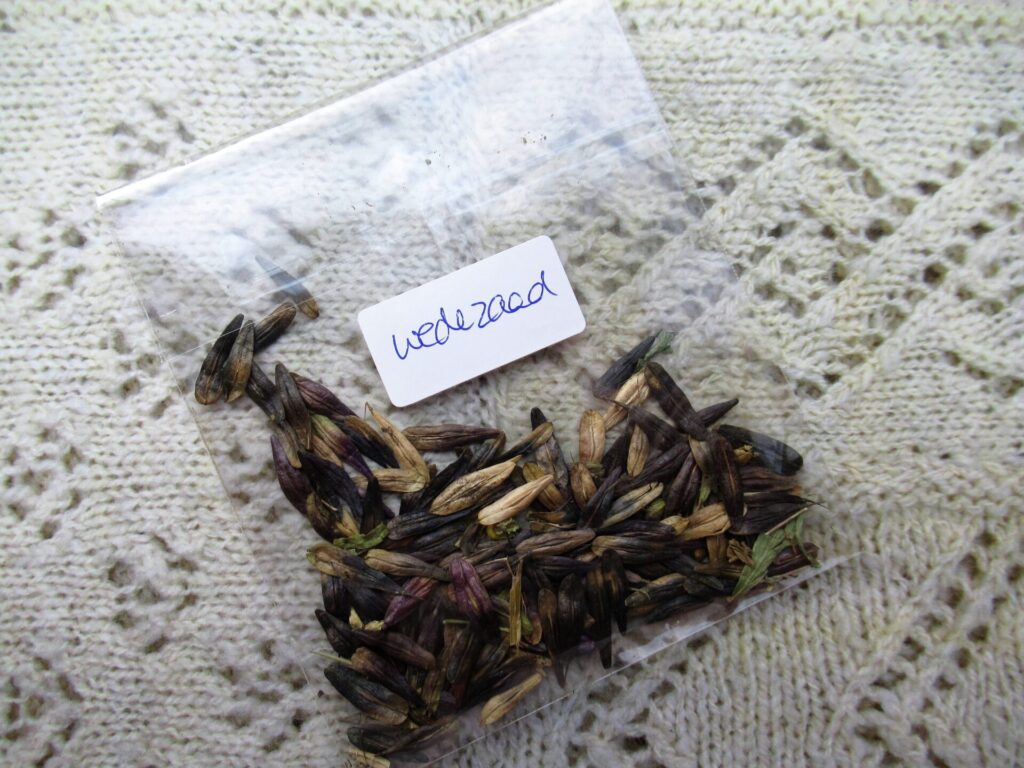
It came with a lovely postcard of a blanket knit from local and hand spun wool. It is one of the blankets that was made last year, as part of a community project aimed at rescuing local wool from being labelled as waste and shipped off to China.
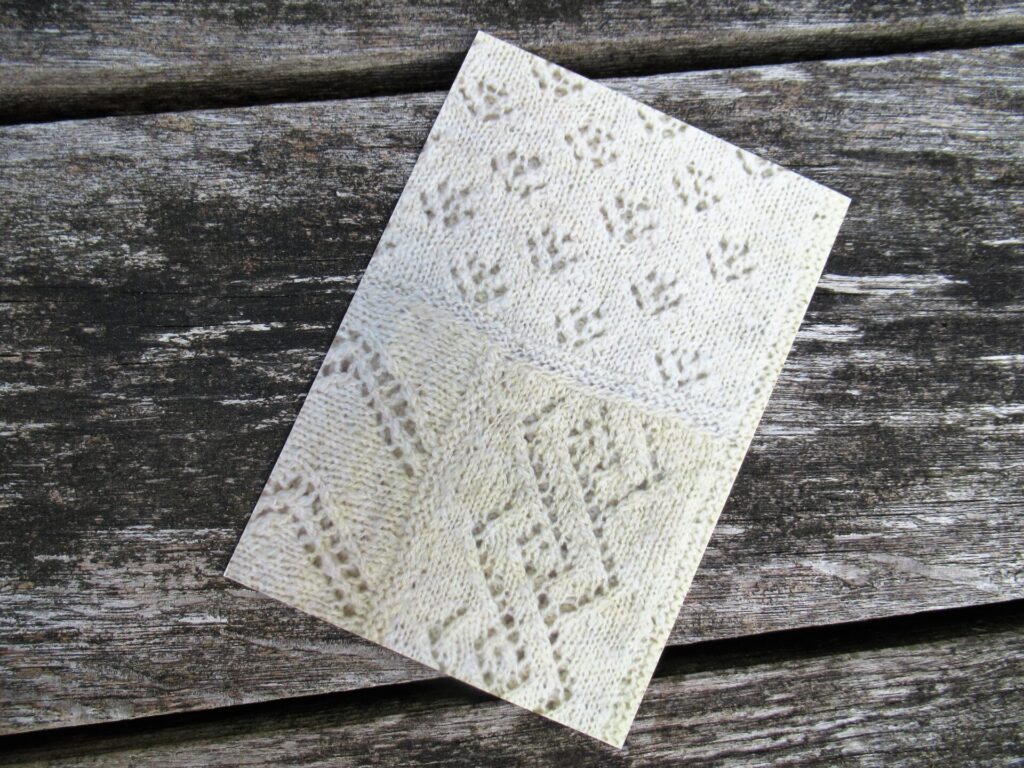
The call for woad growers came from the same people who organized the blanket project. They are now working on more ideas for things to do with local wool, and one of them is dyeing it with locally grown woad.
I won’t pretend to know everything there is to know about woad. In fact, I knew very little about it before I became involved in this project.
From the newsletter, I learnt that for centuries, wool was dyed blue with woad in the Netherlands and other parts of Europe. In the 18th century, Frisian wool comber Eise Eisinga won international awards for his beautiful blue wool. In his spare time, Eise built a planetarium that is now a museum (I knew that, I’ve been to it and it’s great!). The museum still owns his original dye recipes, including one for dyeing with woad.
The seeds themselves vary in colour from pale yellow and green to a deep purplish blue.
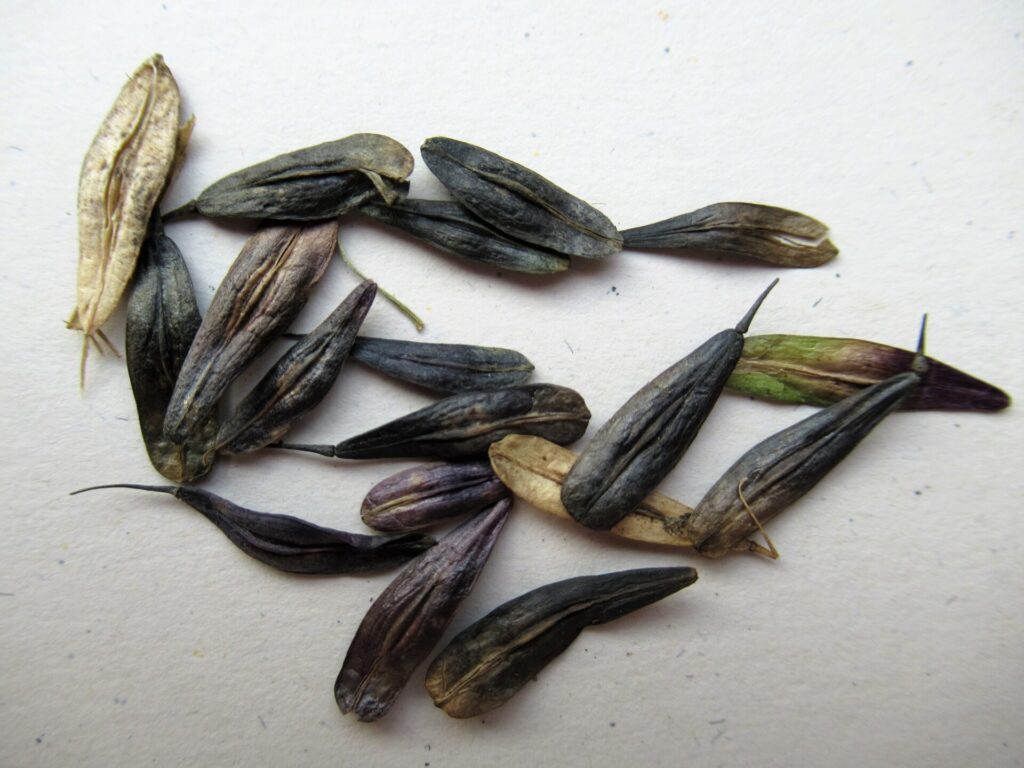
They measure about 2 cm/¾”.
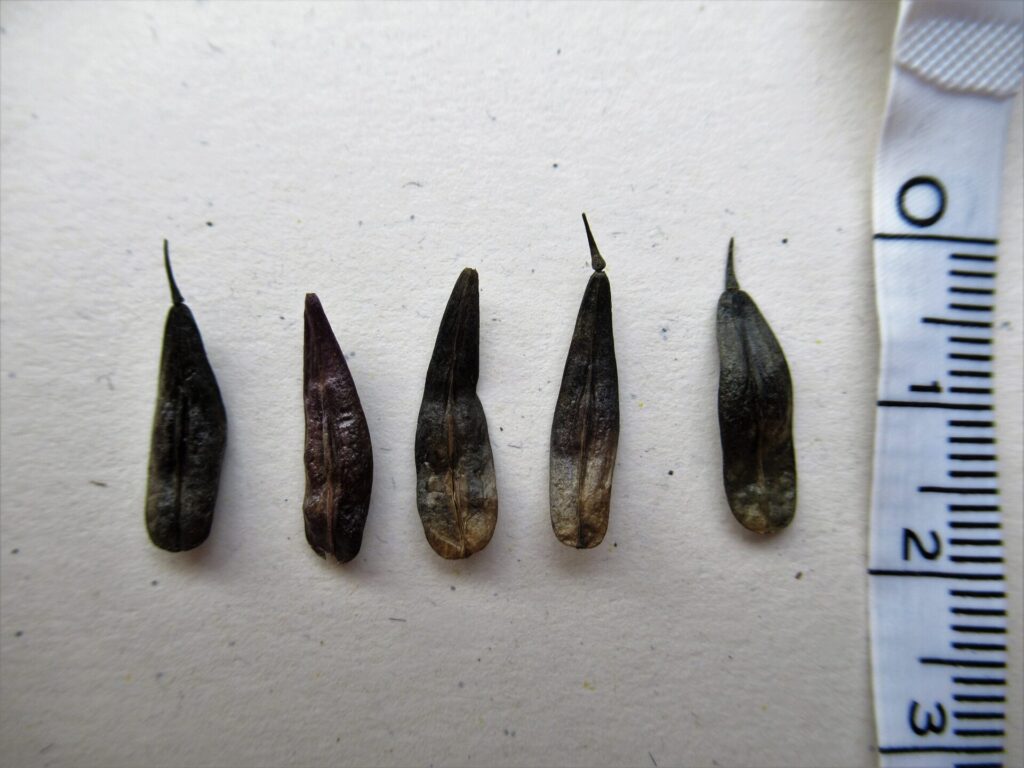
When I thought ‘it won’t take any time at all’ I was kidding myself. When I get involved in a project like this, I can’t just plant a few seeds. I take it seriously, want to do it well, and want to know more than the newsletter tells me. Here are a few things I found out:
- In Latin woad is called Isatis tinctoria. In het Nederlands heet de plant wede, auf Deutsch Färberweid, en Français pastel des teinturier, och på Svenska vejde.
- Tinctoria in a plant name means that the plant can be used for dyeing, as in: Indigofera tinctoria (indigo), Genista tinctoria (dyer’s broom), Cota tinctoria (yellow camomile) etcetera.
- Woad belongs to the brassica family, which also includes broccoli, mustard, cabbages and oilseed rape.
I was going to sow the seeds directly in the garden. But the instructions say that they should be kept moist at all times, so because of the hot and dry weather, I decided to sow them in pots first.
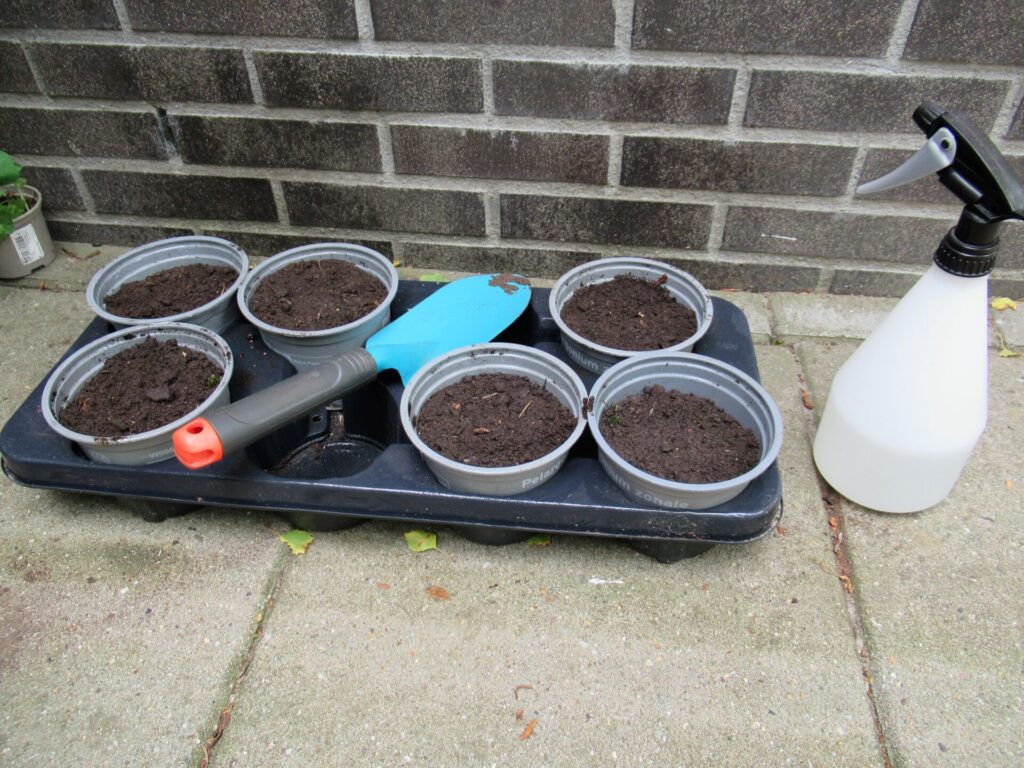
I didn’t use special potting soil, but just dug some soil from the garden, sowed the seeds, covered them with a thin layer of soil, and carefully moistened the soil with a plant sprayer afterwards. Although I placed the pots in the shade, the hot wind had already dried out the soil several hours later. So I spray-misted them again and covered them with plastic.
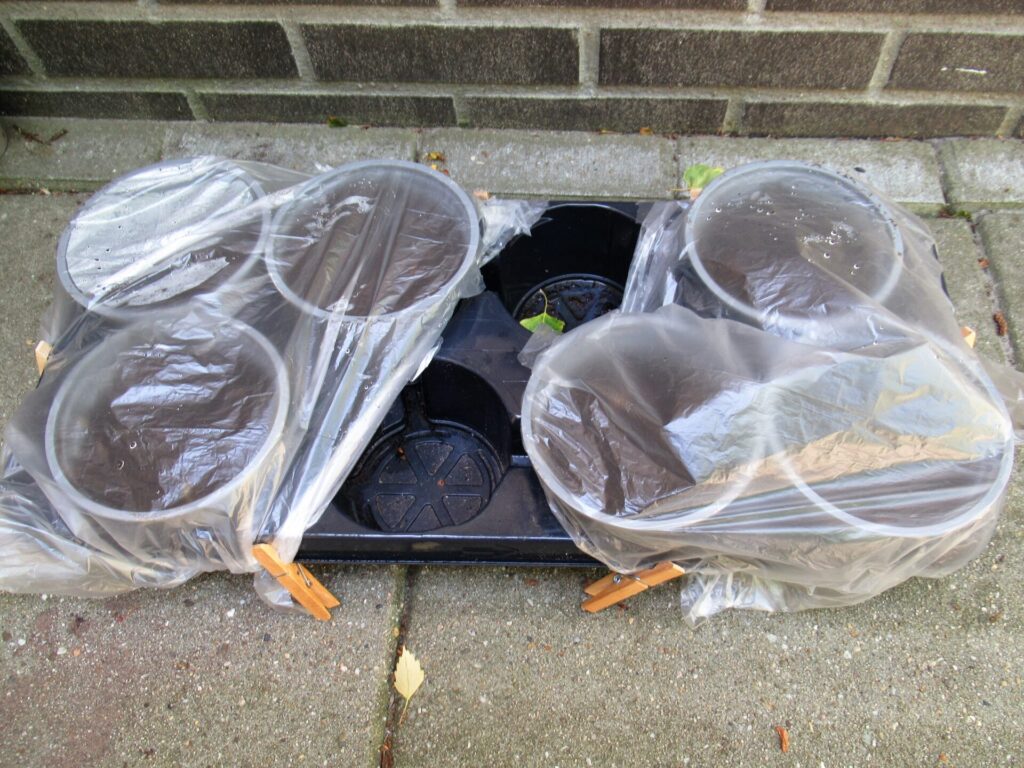
Now, several days later, I’m really glad I planted the seeds in pots. If I hadn’t, they wouldn’t have stood a chance. Some other plants in the garden are already wilting in the heat.
I was sent 1.25 grams of seed and selected some of the plumpest, most promising looking ones.
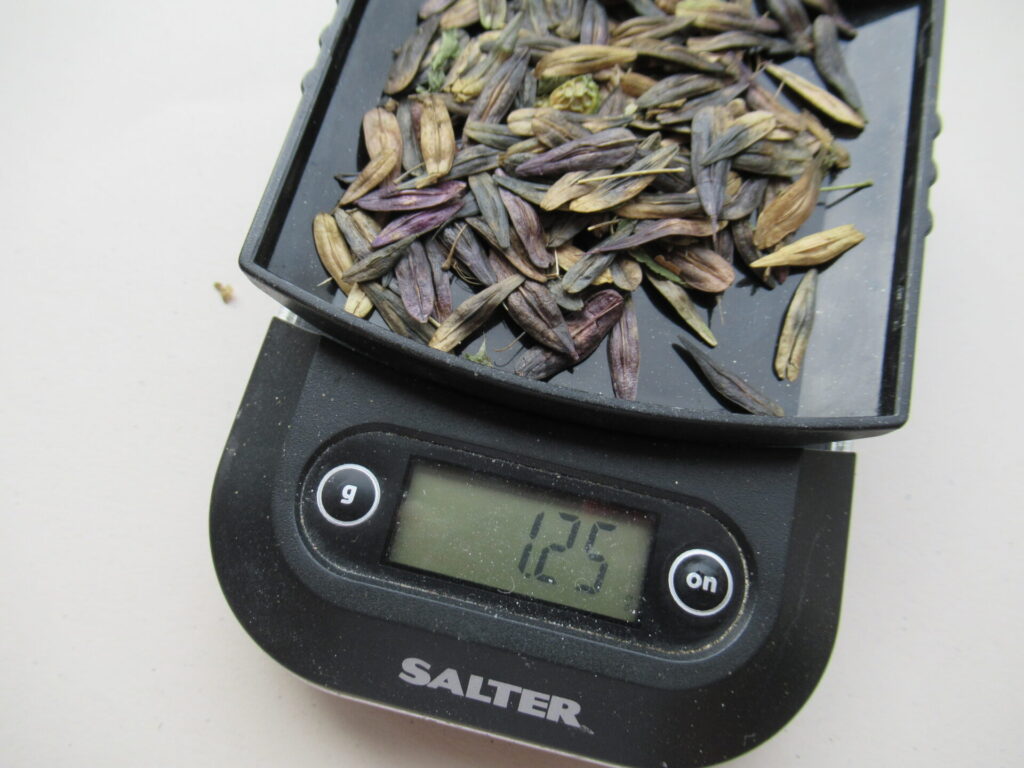
Using only 3 seeds per pot, I have quite a few left. I thought of giving them to a friend, but I’m keeping them for the time being, in case the seeds don’t germinate and I need to try again. I’m hovering over them like an anxious mother hen. Am I using the right kind of soil? Are the seeds still moist? Aren’t they too wet? Are they getting enough sunlight?
I’ll keep you updated about their progress. In the meantime, here are a few links for those of you who’d like to know more.
Links:
- A picture of Eise Eisinga’s woad-dyed wool samples with his handwritten notes can be found here.
- An interesting short video about the wool comber/dyer and astronomer (with English subtitles) can be viewed here. It was filmed in Eise’s beautiful blue living room with his working model of the solar system on the ceiling. (Scroll down to second video. Be patient – it continues after the quote.)
- If you’ve missed the blog post about my humble attempts at rescuing some local wool and about the Wool Rescue Handbook, you can read it here.
What a nice project!
In my small village in Drenthe there’s a local dyer, her company is called Land of the Hunebeds, and she dyes with locally sourced plants. Woad is one of them and it gives the wool a lovely light indigo color, darker and deeper then on the samples from the Eisinga link.
You can find her Instagram account with woad dyed wool here (she also has an Etsy shop):
https://www.instagram.com/p/CDdrpDlAiRk/
Thank you for the tip! I haven’t heard of her and am going to take a look immediately.
How interesting! I am happy to know a little more about woad. I have spent my life as a textile historian so I’m happy to see the efforts to grow woad (and to save your local wool). The Eisinga Museum looks like a fascinating place–I’ll put it on my must-see list next time I’m in Holland.
Thank you for enlightening me today.
Textile historian sounds like a dream job! Did you work at a museum?
Wow. Never heard of woad or vejde. Thanks for the learning experience!
I googled vejde and learned more. It is rare in Sweden but was used to dye the blue in the Swedish flag and the blue uniforms of the Swedish army. Very interesting!
That is really interesting. Thanks!
Hello! I am learning to natural-dye with plants that grow nearby my house here in the Netherlands. I find the color of woad incredibly beautiful! Is there a way to get a couple of seeds? Or would you mind to share a contact with the ‘Woad Growers Wanted’ project?
Many thanks!
Hi Mariana,
You can contact the woad project people here: https://www.pleed.nl/contact/ I hope they still have some seeds for you. Good luck!